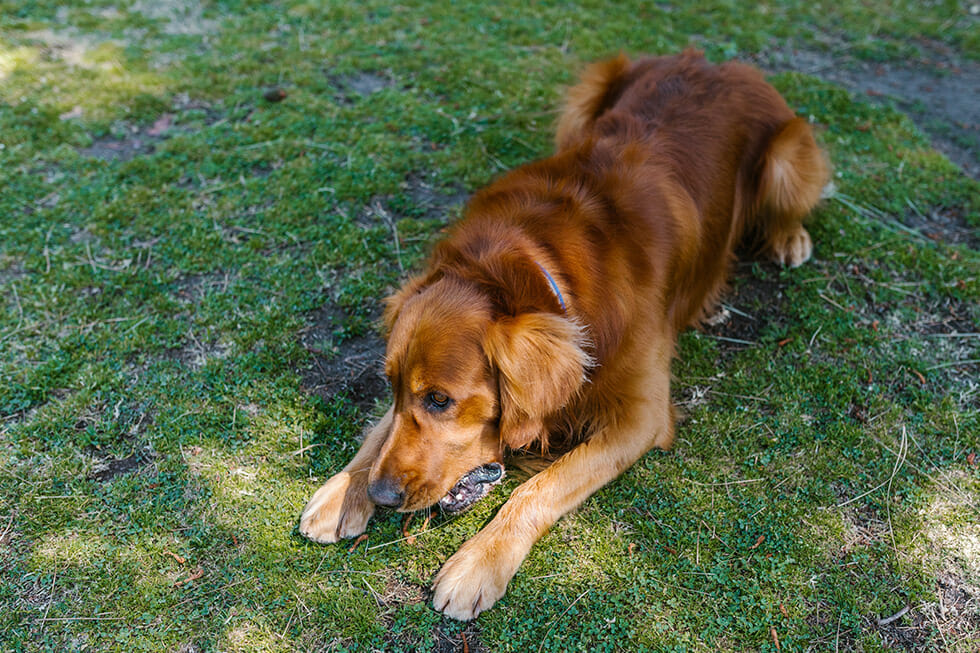Cruciate Ligaments
andreas strauss
May 10, 2022
Not only are cruciate ligament ruptures incredibly painful for your dog, but they can also be very costly to fix. Pet Insurance Australia takes an in-depth look into cruciate ligament problems and how you can prevent your pet from succumbing to this painful condition.
“Cruciate ligament problems are a very common claim when it comes to pet insurance,” Nadia Crighton from Pet Insurance Australia says. “It can be brought on from a range of reasons, from accidents and injuries to bad breeding, obesity, and underlying genetic conditions.”
The Cranial Cruciate Ligament or CCL is an important band of connective tissue that joins the thighbone with the lower leg and allows stability to the knee on the hind leg of your dog. When this ligament is damaged or ruptured it can cause sudden lameness and pain. Surgery is typically recommended for dogs with cruciate ligament ruptures.
“It’s important to note that some dogs can show a slow degeneration of this ligament, while others may suddenly become lame after a twisting/jumping action,” she says. “Treatment is paramount to prevent your dog from suffering and pet owners are advised to seek veterinary treatment for any lameness to rule out any damage to the cruciate ligament.”
The Top 5 Breeds impacted by Cruciate Ligament Disease/Conditions
1. Newfoundland
2. Australian Terrier
3. American Bulldog
4. Bichon Frise
5. Rottweiler
“However, any breed of dog, regardless of size can be impacted by cruciate ligament problems,” Crighton says. “Interestingly this is a typically a younger dog problem. We typically see the initial onset for dogs ranging from the age of two until seven.”
Preventing Cruciate Ligament Problems
Like with all canine-related conditions, prevention is far better than a cure. Pet owners can help prevent their dogs from suffering from this condition with little care and understanding.
“Keeping your pet at a healthy weight range is one way you can help take the strain off their cruciate ligaments,” Crighton advises. “As too taking care when exercising your dog, and not over-exerting with twisting or jumping movements, particularly during puppyhood.”
Dogs are also masters at masking painful injuries. If you notice your pet is lame or reluctant to use one of their legs, even occasionally – it’s recommended to seek advice from your veterinarian.
“Cruciate ligament disease and condition claims certainly increase year on year,” Crighton notes. “We did see a good spike in these claims during covid lockdowns which was an indication that many desperate owners were perhaps hitting the pavement with their pets more often or undertaking excessive play sessions.”
Exercise is paramount for dog wellbeing and health, however, pet owners are advised to seek advice when it comes to the types of exercise that are best suited to the breed of dog they own.
“Some breeds are built to run and work, while others are not,” Crighton advises. “Understanding your breed’s history and taking sensible steps when it comes to encouraging leaping, jumping, and twisting is recommended for all dog breeds.”
Pet Insurance Australia also tends to see spikes during the month of September – December for claims in this regard.
“This could be a sign that pets are a little more dormant during the cooler months and perhaps are beginning to become more active as spring and summer evolve,” Crighton says. “It’s a good indication that perhaps if your pet isn’t exercising as much during the cooler months to ensure you slowly reintroduce them to a more active lifestyle.”
Featured by:
Photo by RODNAE Productions


8 Comment